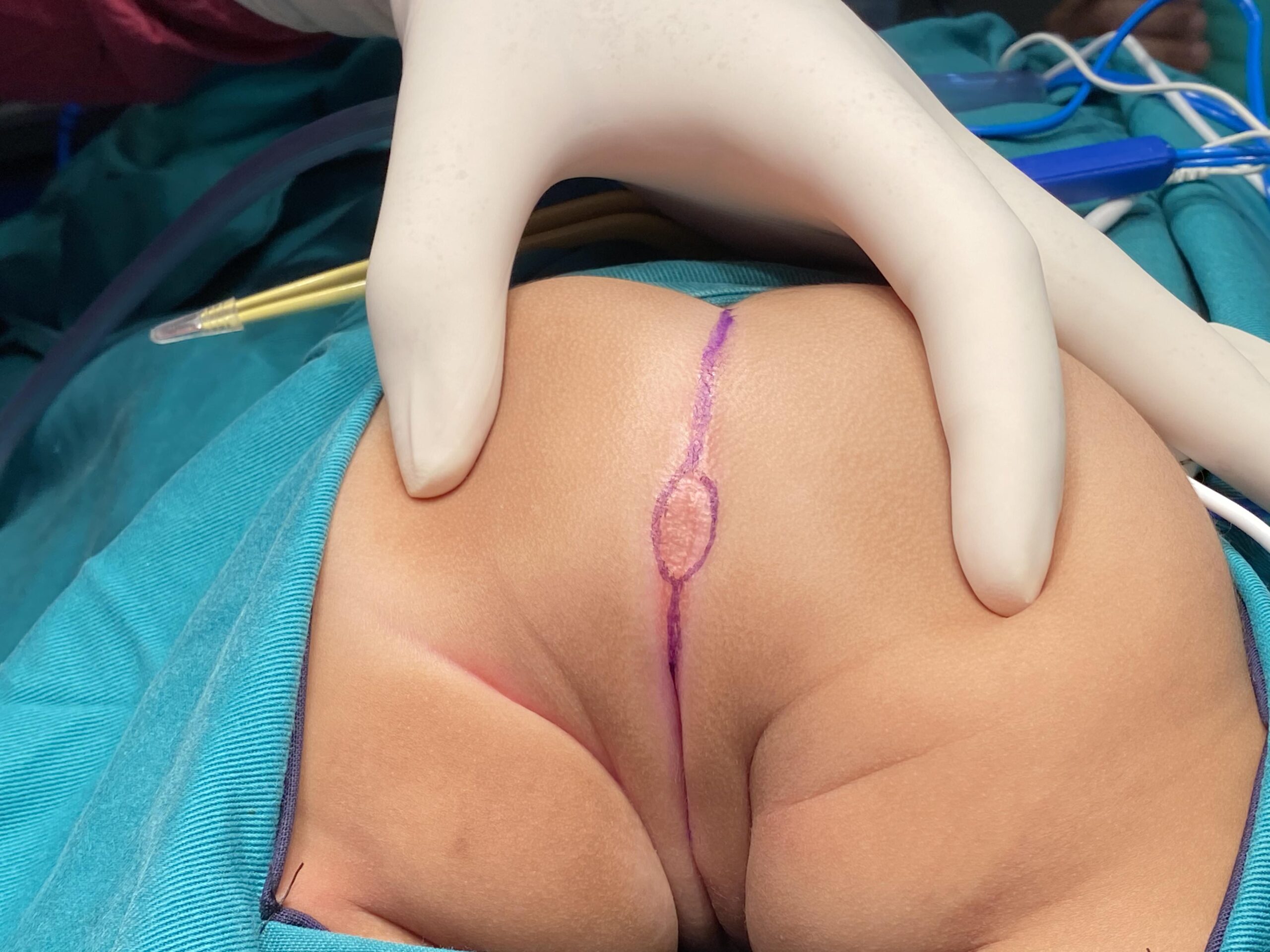Posterior Sagittal Anorectal Vaginal Urethral plasty(PSARVUP)
Common Cloaca Surgery also called as Posterior Sagittal Anorectal Vaginal Urethral plasty (PSARVUP) is the surgical procedure done in children with Common Cloaca. This surgery is usually done at 4 to 12 months of age. In this surgery, the new openings for potty (Anus), vagina, and urine are made at the bottom of the child to have all three openings like any normal child.Before PSARVUP:
Before this surgery, the child is examined, and Colostomy is checked, as most commonly, this colostomy must have been made at the initial days of life of the child. Some investigations of blood are done. Repeat Ultrasound is done, and an X-ray of the spine of the child (If not done before) is done. Most of the time, Distal Colostogram is done to understand the child’s anatomy and plan the procedure. Also, Cystoscopy is done to determine the length of the common Channel and make a holistic plan before common cloaca surgery. During Cystoscopy, catheters are usually left in all openings inside, and contrast studies are done through it.Surgical Procedure for Common Cloaca:
Most of the time, this common cloaca surgery is done from the bottom of the child, and an incision is made in the midline.
After PSARVUP:
- After PSARVUP, usually, we allow the children to feed after a few hours. If the tummy is not opened, the child is usually discharged after 2 to 3 days. But if the tummy is also opened, then hospital stay will be longer. After this common cloaca surgery, usually, pain is not very much a problem and is well-controlled.
- We will examine the child after 2 to 3 weeks under General anesthesia, and will assess his wound.
- We usually leave a catheter for urine in the Urinary bladder of the child, and then remove it after 3 weeks of surgery.
- After this examination, we advise the children to start Anal Dilatation Program.
- Once the adequate size of the Dilator is achieved, the child is ready for the next surgery (Colostomy Reversal).
Related Links:
Some FAQ's About Common Cloaca
In females, normally three separate opening are found at the bottom, each for urine, vagina and anus. However, if due to some reasons, all of these openings join and there is only one opennin gvisible at the bottom, it is called as cloaca.
Yes, it is possible. However, it is not common and it is found in 1 in 50000 live births.
No. Rectum is an opening for passage of stool. Among females, rectum is separate from vagina and urine hole. However, if rectum, vagina and urine hole join together into one opening, it is called as cloaca.
No, it is almost impossible to create a cloaca surgically.
Cloacal malformations are a rare occurrence in about 1 out of 20,000 to 25,000 newborn females.
Male cloacal variants were defined as a defect in males with a single perineal opening, in which rectum and urinary tract, with or without vagina, converge into one common channel.
A PSARP is a procedure used to make anal opening and repair rectal/anorectal malformations in some children.
Cloacal exstrophy is a condition where some of the internal organs that are normally in the lower abdomen are exposed externally. Int his condition, urine, stool opening are joined together and open at the tummy of the child.